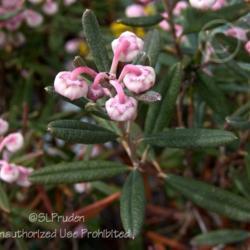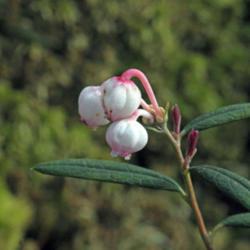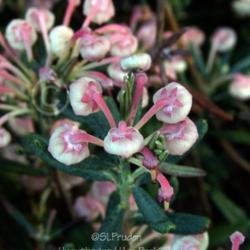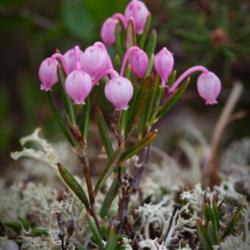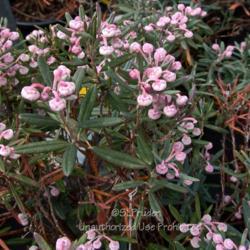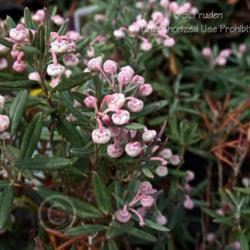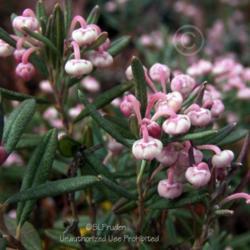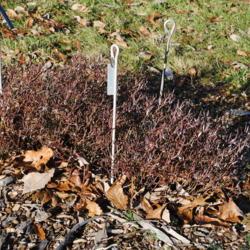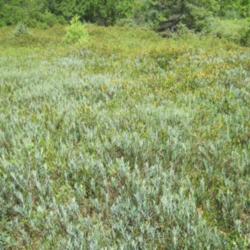| Plant Habit: | Shrub |
| Life cycle: | Perennial |
| Sun Requirements: | Full Sun Full Sun to Partial Shade |
| Water Preferences: | Wet Wet Mesic Mesic |
| Soil pH Preferences: | Very strongly acid (4.5 – 5.0) Strongly acid (5.1 – 5.5) Moderately acid (5.6 – 6.0) |
| Minimum cold hardiness: | Zone 2 -45.6 °C (-50 °F) to -42.8 °C (-45°F) |
| Maximum recommended zone: | Zone 5b |
| Plant Height: | usually about 1 foot high, to 3 feet possible |
| Plant Spread: | 2 to 3 feet |
| Leaves: | Unusual foliage color Evergreen Broadleaf |
| Fruit: | Other: small dry turban-shaped 5-valved capsules |
| Fruiting Time: | Late summer or early fall |
| Flowers: | Other: white to pink urn-shaped bells about 1/4 inch long |
| Flower Color: | Pink White |
| Bloom Size: | Under 1" |
| Flower Time: | Late spring or early summer Summer |
| Suitable Locations: | Bog gardening |
| Resistances: | Flood Resistant |
| Toxicity: | Leaves are poisonous |
| Propagation: Seeds: | Self fertile |
| Pollinators: | Self Moths and Butterflies Bees |
| Containers: | Suitable in 3 gallon or larger |
| Miscellaneous: | Tolerates poor soil Monoecious |


